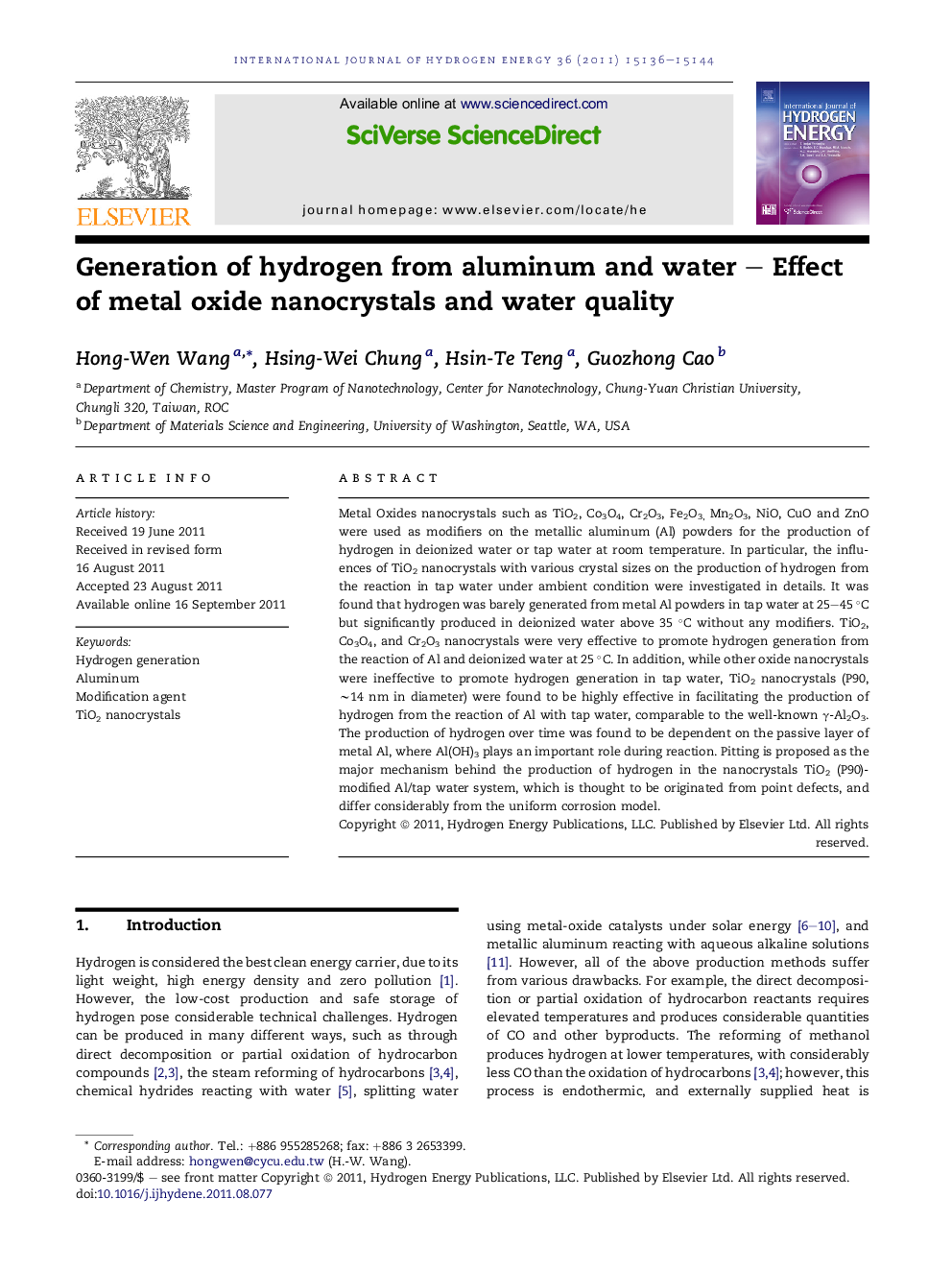| Article ID | Journal | Published Year | Pages | File Type |
|---|---|---|---|---|
| 1271805 | International Journal of Hydrogen Energy | 2011 | 9 Pages |
Metal Oxides nanocrystals such as TiO2, Co3O4, Cr2O3, Fe2O3, Mn2O3, NiO, CuO and ZnO were used as modifiers on the metallic aluminum (Al) powders for the production of hydrogen in deionized water or tap water at room temperature. In particular, the influences of TiO2 nanocrystals with various crystal sizes on the production of hydrogen from the reaction in tap water under ambient condition were investigated in details. It was found that hydrogen was barely generated from metal Al powders in tap water at 25–45 °C but significantly produced in deionized water above 35 °C without any modifiers. TiO2, Co3O4, and Cr2O3 nanocrystals were very effective to promote hydrogen generation from the reaction of Al and deionized water at 25 °C. In addition, while other oxide nanocrystals were ineffective to promote hydrogen generation in tap water, TiO2 nanocrystals (P90, ∼14 nm in diameter) were found to be highly effective in facilitating the production of hydrogen from the reaction of Al with tap water, comparable to the well-known γ-Al2O3. The production of hydrogen over time was found to be dependent on the passive layer of metal Al, where Al(OH)3 plays an important role during reaction. Pitting is proposed as the major mechanism behind the production of hydrogen in the nanocrystals TiO2 (P90)-modified Al/tap water system, which is thought to be originated from point defects, and differ considerably from the uniform corrosion model.
► New effective modifiers such as TiO2, Co3O4, and Cr2O3 were found for the reaction of Al and water. ► Ball-milling process deteriorated the hydrogen generation. ► The effectiveness of de-ionized water and tap water on hydrogen generation was compared. ► FESEM, ICP and SIMS confirmed the mechanism behind the hydrogen generation from the reaction of Al and water.
